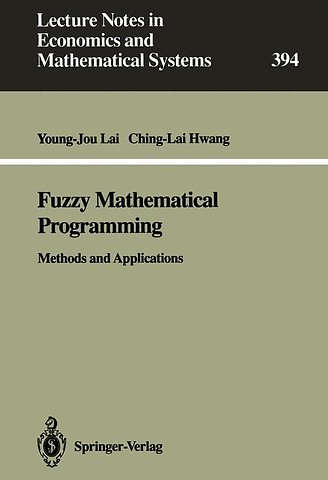Fuzzy Mathematical Programming
Methods and Applications
Paperback Engels 1992 9783540560982Samenvatting
In the last 25 years, the fuzzy set theory has been applied
in many disciplines such as operations research, management
science, control theory,artificial intelligence/expert
system, etc. In this volume, methods and applications of
fuzzy mathematical programming and possibilistic
mathematical programming
are first systematically and thoroughly reviewed and
classified. This state-of-the-art survey provides readers
with a capsule look into the existing methods, and their
characteristics and applicability to analysis of fuzzy and
possibilistic programming problems. To realize practical
fuzzy modelling, we present solutions for real-world
problems including production/manufacturing, transportation,
assignment, game, environmental management, resource
allocation,
project investment, banking/finance, and agricultural
economics. To improve flexibility and robustness of fuzzy
mathematical programming techniques, we also present our
expert decision-making support system IFLP which considers
and solves all possibilities of a specific domain of (fuzzy)
linear programming problems. Basic fuzzy set theories,
membership functions, fuzzy decisions, operators and fuzzy
arithmetic are introduced with simple numerical examples in
aneasy-to-read and easy-to-follow manner. An updated
bibliographical listing of 60 books, monographs or
conference proceedings, and about 300 selected papers,
reports or theses is presented in the end of this study.
Specificaties
Lezersrecensies
Inhoudsopgave
Anderen die dit kochten, kochten ook
Rubrieken
- advisering
- algemeen management
- coaching en trainen
- communicatie en media
- economie
- financieel management
- inkoop en logistiek
- internet en social media
- it-management / ict
- juridisch
- leiderschap
- marketing
- mens en maatschappij
- non-profit
- ondernemen
- organisatiekunde
- personal finance
- personeelsmanagement
- persoonlijke effectiviteit
- projectmanagement
- psychologie
- reclame en verkoop
- strategisch management
- verandermanagement
- werk en loopbaan






